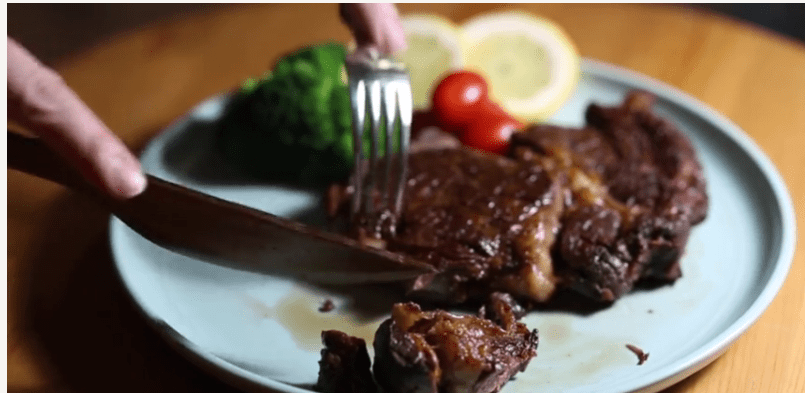Wood might be the last material you’d think of to use in cutting tools, but researchers employed a novel method that processes wood into knives sharp enough to easily slice steak. In fact, these wooden knives are nearly three times sharper than a stainless steel dinner table knife.

Most kitchen knives are either made of steel or ceramic, both of which require high temperatures of up to a few thousand degrees Celsius to forge. Wood, on the other hand, is sustainable and far less energy-intensive to process.
“A wood knife could be a promising sustainable alternative for a stainless-steel dinner table knife, with even better performance,” Teng Li, senior author of the study and a materials scientist at the University of Maryland, told ZME Science.
Wood is one of the oldest materials in human history, having been used for tens of thousands of years in virtually all areas of life, from construction and furniture to energy production. Wood can be turned, planed, finely carved, bent, and woven. When burned in the absence of oxygen, it turns to coal, a fuel still used by millions for cooking and heating.
However, natural wood has its limits. When processed into furniture or construction materials, wood tends to rebound after shaping. Seeking to make wood more versatile, Li and colleagues devised a new processing method that keeps the advantageous properties of the material while removing those that may hamper wood’s ability to act as a cutting tool.
Wood is super strong thanks to cellulose, which has a higher ratio of strength to density than ceramics, most metals, and polymers. However, cellulose only makes up to 50% of the wood, the rest consisting of lignin and hemicellulose.
Using a two-step process, the scientists first delignify the wood by boiling it at 100° Celsius in a bath of chemicals. Typically, wood is very rigid, but once the binding lignin is gone, the material becomes soft and flexible. In the second step, the now squishy wood is hot pressed to densify and remove the excess water.
Finally, after the processed material is carved into the desired shape, a mineral oil coating is applied so that the wooden knife doesn’t go dull (cellulose likes water a bit too much for a cutting knife).
Besides knives, the researchers also fashioned their processed wood into nails, which proved as sharp and sturdy as conventional steel nails. But unlike their metal counterparts, the wooden nails don’t rust. In one demonstration, the researchers hammered together three boards without any damage to the wooden nails.
It was obvious from these demonstrations that the researchers had made a super strong material — and they soon found out why. When viewing treated samples under the lens of a high-resolution microscope, the scientists found the processed wood had much fewer voids and pits, which are common defects in natural wood.
“When we found that the processed wood can be 23 times harder than natural wood, we were excited and wondered what such hardened wood could be used for. The brainstorming we enjoyed led to two potential demonstrations, wood knives and nails, which could be a sustainable alternative for the steel and plastic dinner table knives and steel nails. Cutting a medium-well done steak with our wood knife easily was fun and satisfying,” Li said.
For now, these are just demonstrations of the technology at the lab scale. However, the researchers believe they can scale the process so that sharp wooden knives could be sold at a cost that is competitive with conventional steel knives. “This will take some time and extra research and development efforts. But this is definitely worth doing,” Li added.
“The wood knife and nails are just two demonstrations of the hardened wood. Hard and strong materials are widely used in our daily life. There exist fertile opportunities to use hardened wood as a potential replacement of current cutlery and construction materials, such as steel and ceramics,” Li said.
“There are more than 3 trillion mature trees on earth, per a recent study published in Nature. This translates to more than 400 trees for each of us in the world. Trees are renewable and wood is sustainable. Our existing use of wood barely touches its full potential. There are fertile opportunities for us to use widely available materials in nature toward a sustainable future.”
The findings were reported in the journal Matter.



